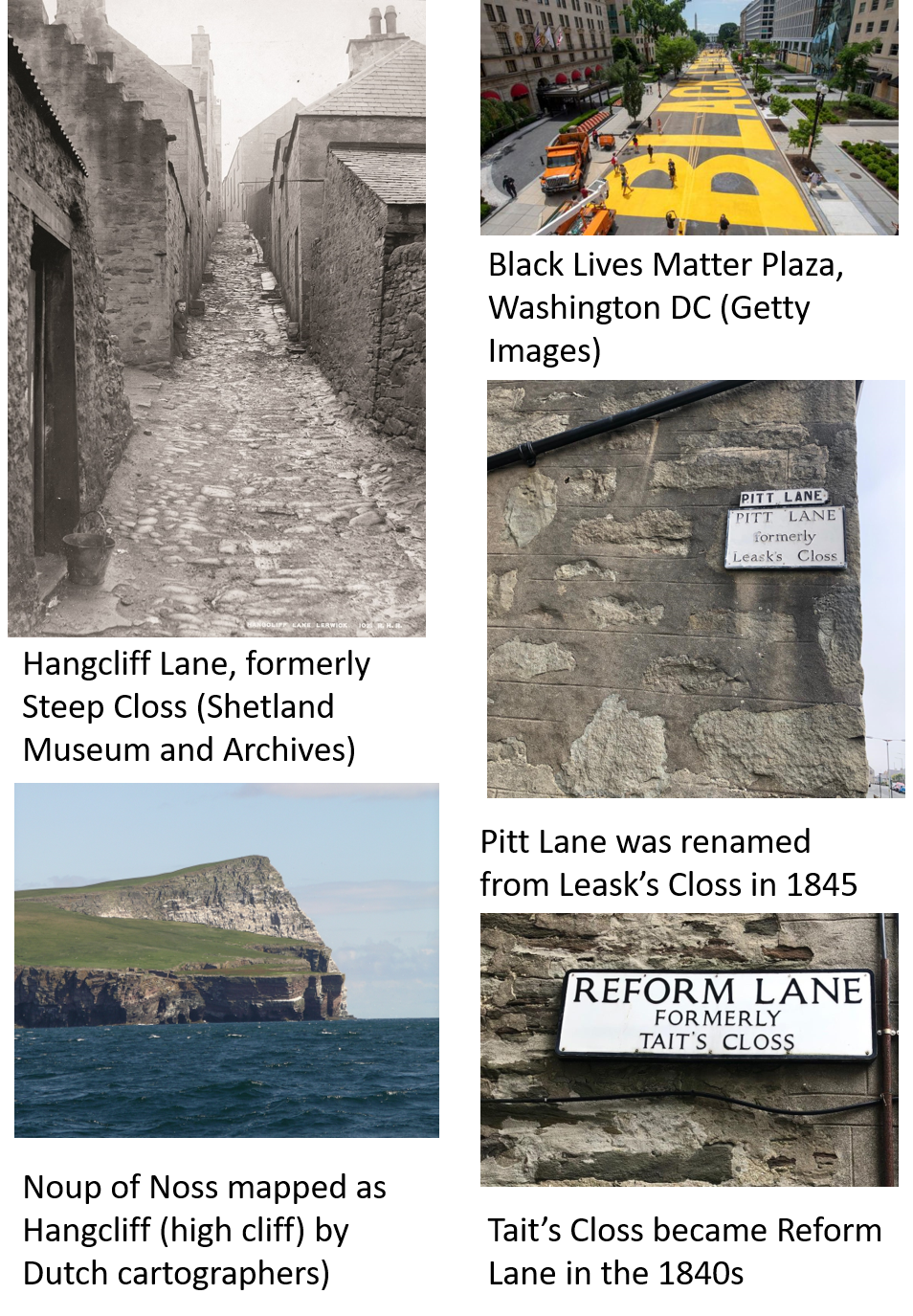Place-name of the week – Lerwick Lanes
Published: 18 June 2020
 The death of George Floyd on 25 May 2020 prompted a global outpouring of grief and anger highlighting racism and inequality in societies. The resulting protests and demonstrations have seen statues torn down and street names changed. The Mayor of Washington DC renamed the street leading up to the White House Black Lives Matter Plaza because she wasn't happy with the way President Trump reacted to the protests, and the Mayor of New York announced that a street in each borough will be renamed Black Lives Matter. In many other cities, campaigners want to eradicate references to the slave trade; in Glasgow there is a growing movement to rename Buchanan Street, named after slave owner Andrew Buchanan, as George Floyd Street.
The death of George Floyd on 25 May 2020 prompted a global outpouring of grief and anger highlighting racism and inequality in societies. The resulting protests and demonstrations have seen statues torn down and street names changed. The Mayor of Washington DC renamed the street leading up to the White House Black Lives Matter Plaza because she wasn't happy with the way President Trump reacted to the protests, and the Mayor of New York announced that a street in each borough will be renamed Black Lives Matter. In many other cities, campaigners want to eradicate references to the slave trade; in Glasgow there is a growing movement to rename Buchanan Street, named after slave owner Andrew Buchanan, as George Floyd Street.
Place-names around the globe act as pointers to moments in history – name changes can reflect current political awareness, trends or insights into the name-givers lives and attitudes. Signs to some Lerwick lanes provide a snapshot into history. From the 1640s to the 1840s Lerwick grew with a series of closses (narrow streets), courts and lanes leading from the Shore to the Hillhead, in which rich and poor lived side by side in overcrowded conditions. Some were named after early residents - Sutherland’s Closs, Tait’s Closs, Betty Mann’s Closs, Grierson’s Closs., whilst others reflected occupiers’ professions - Law Lane, Skippers’ Court, Pilot Lane.
In 1845 the Commissioners of Police, the then local authority, decided to ‘modernise’ the names. The path along the shore became Commercial Street, Betty Mann’s Closs was renamed Crooked Lane and Dirty Closs changed to Chromate Lane. Others were given names such as Pitt Lane, Reform Lane and Fox Lane reflecting the political scene of that period. Da Steep Closs was renamed Hangcliff Lane. Dutch cartographers had mapped the Noup of Noss as Hangcliff (high cliff), so the name was chosen either because the Noup could be seen from the top of the lane, or because its steepness reminded the names of the steep noup(height with a steep front).
Many other place-names, especially house names have also changed through time. They reflect change of use, transfer of ownership, new trends, new builds on former sites and people moving to a new area and taking a name with them. There are also cases where place names have been miss-spelt on maps or in documents leading to new forms subsequently being adopted. I’ll explore these in a future blog.
Eileen Brooke-Freeman, Shetland Place Names expert, June 2020
We hope you have enjoyed this blog.  We rely on the generous support of our funders and supporters to continue our work on behalf of Shetland. Everything we do is about caring for Shetland's outstanding natural and cultural heritage on behalf of the community and for future generations. Donations are welcomed and are essential to our work.
We rely on the generous support of our funders and supporters to continue our work on behalf of Shetland. Everything we do is about caring for Shetland's outstanding natural and cultural heritage on behalf of the community and for future generations. Donations are welcomed and are essential to our work.

